
| What is Flavor and Fortune? |
| How do I subscribe? |
| How do I get past issues? |
| How do I advertise? |
| How do I contact the editor? |
Read 12930050 times
Connect me to:
| Home |
| Articles |
| Book reviews |
| Letters to the Editor |
| Newmans News and Notes |
| Recipes |
| Restaurant reviews |
| Article Index (all years, slow) |
| List of Article Years |
| Article Index (2025) |
| Article Index (last 2 years) |
| Things others say |
| Related Links |
| Log In... |
| Authors |
| Categories & Topics |
Fermentation, Chinese Style
| by Jacqueline M. Newman |
Equipment and Techniques
Spring Volume: 2011 Issue: 18(1) page(s): 31-35
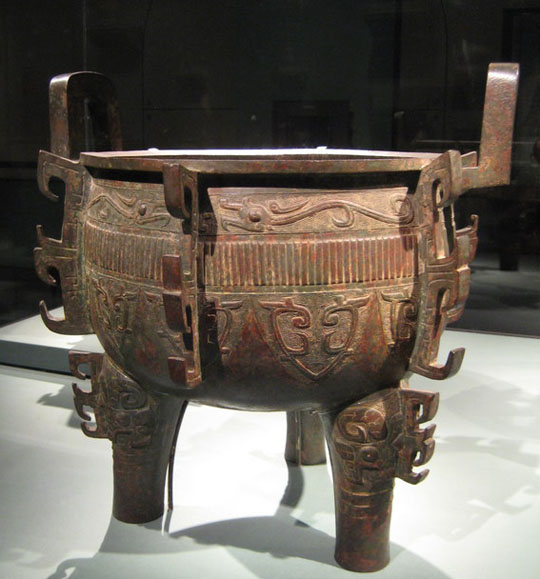
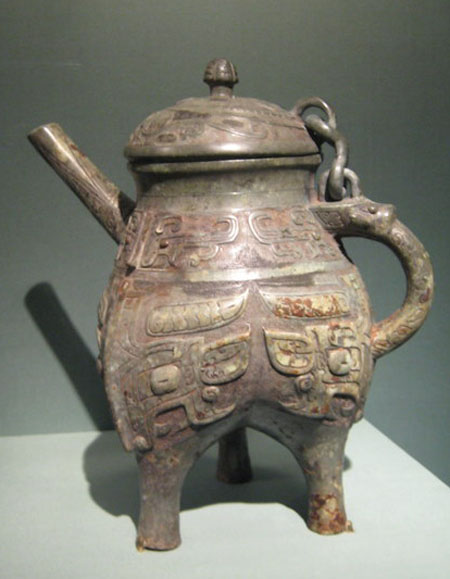
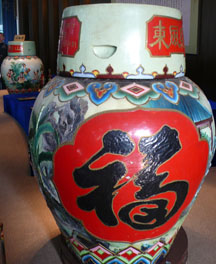 Chinese culinary professionals and ordinary Chinese folk have been fermenting foods and beverages since before Han Dynasty times (206 BCE - 220 CE). Scholars tell us that China was one of the first countries to make fermented beverages, some of them indicating it was the first country to do so. Historians report Chinese wine-making techniques more than four thousand years ago. They also report fermented non-alcoholic foods including simple and complex sauces made during those early years. This magazine wrote about many of them in more than a dozen volumes; many are already posted on its website in volumes: 2(2); 4(2); 4(3); 4(4); 7(2); 7(4), 8(4), 9(1); 9(2); 10(1); 10(2); 14(3); and 15 (1).
Chinese culinary professionals and ordinary Chinese folk have been fermenting foods and beverages since before Han Dynasty times (206 BCE - 220 CE). Scholars tell us that China was one of the first countries to make fermented beverages, some of them indicating it was the first country to do so. Historians report Chinese wine-making techniques more than four thousand years ago. They also report fermented non-alcoholic foods including simple and complex sauces made during those early years. This magazine wrote about many of them in more than a dozen volumes; many are already posted on its website in volumes: 2(2); 4(2); 4(3); 4(4); 7(2); 7(4), 8(4), 9(1); 9(2); 10(1); 10(2); 14(3); and 15 (1).
With all of this reporting, we know we have just scratched the surface of fermentation. We know this because newer excavation finds from the 1970's just starting to be reported in and after the 1990s show newer facts and illustrations about fermentation. One such in the Hebei Province uncovered two wine-storing and wine-drinking vessels. These were unearthed with some alcoholic beverage or jiu still in them. The liquid, when analyzed, indicated these beverages were made from wheat and were thousands of years old. One source said forty-three thousand years old. Clearly, we can not confirm that number.
This fermented liquid may be why some historians believe China the oldest culture to ferment a beverage. In the Shandong Province, at the Dawenkou ruins, they did find vessels used for holding wine that were more than four thousand years old, but no liquid was found in them.
The oldest written fermentation record is of a Chinese alcoholic beverage in the Chan Kuo Tse. Edited by Liu Hsiung who lived circa 77 to 6 BCE during the Han Dynasty, this book writes about an era long before his time. It says wine was first made in Kao Yang of what is now the I-Tu County in the Shandong Province,and made at the time of Yu, the ruler who founded the Xia Dynasty, circa 2000 BCE. An ancient temple wine bronze, though not that old, is shown on this page as is a wine-pouring container and a very modern wine storage container seen at a wine museum in Shaoxing.
In a seven hundred forty-one page volume in the Joseph Needham Science and Civilization in China series, specifically in Volume VI: 5 edited by H.T. Huang, many types of ancient fermentation are discussed. Huang only scratches the surface of food and beverage fermentation. He writes about sauces most often called jiang, alcoholic beverages mostly called jiu, and many other foods made with these and other processes.
Huang and Hsiung's book are not the only volumes dealing with early fermentation. Important Methods of Sustaining the People, and Important Arts of the Food of China are two other volumes discussing very early fermentation. In them, common practices of making wine from rice, millet, and wheat, are discussed. These practices are still in use, as attested by fermented rice wines found in a many a local Chinese supermarket and liquor store. Two such products are illustrated with this article, the first called fermented rice, the second called sweet rice pudding. There are others with still other names.
Early fermentation of fruit juices used sugars on the skin of the fruits and inside the fruits, they even used some sweet dust found in fruit orchards. Vegetable and cereal foods were fermented, too. These take longer to ferment because starches need more time to change to simple sugars before fermenting than do the simple sugars found in fruits. Chemistry teaches that saliva in the mouth is a good source of an enzyme facilitating this process. It mixes with starches and converts them to sugars using the enzyme ptyalin. This conversion is why this process is not as quick as those using simple sugars.
China was not alone using saliva. Early tribal women in many countries chewed starches and their ptyalin or the enzyme diastase from malt, began the fermentation process. The Chinese and others learned to sprout grains and add maltose, an early beer starter; they used red barley, too.
In China, wine was fermented using cooked or steamed rice. These grains disappeared as the liquid bubbled in the fermentation process. These days, supermarket shelves have jars of fermented rice, in some of them the rice is mush. If you have never used them in cooking, buy one and do so soon; they are in the refrigerator section. Your dishes will have delightful flavors. If you make alcoholic beverages, try some of these when making them, too.
Cake ferment made in this process uses various raw, steamed, and roasted grains. Then and now, molds and yeasts were also used. Both Aspergillus and Hycor are two of them, and one or the other was mixed with herbs and glutinous rice, millet, and/or other starches. Dried fermented rice balls do the same. They, too, are found on supermarket shelves, usually not in the refrigerated section of the store.
Once when leading a tour of Asian markets in Flushing, a lady asked me: "What do the Chinese use these two moth balls for that I just found in this market?" Clearly she and others did not recognize these two round white items as things that are intended for folks who want to ferment their own rice or other foods.
We once read an interesting item about fermentation that took place during the later Wei Dynasty (386 - 534 CE). At that time, male children were used to make the cake ferment and they needed to face west. Never did learn why, but I do suspect that since west can signify death, perhaps some were killed afterwards to protect the secrets of the fermentation process they were involved with.
Also learned from the same source, that some women and some dirty young males were employed in the process, and on the day they did this work they were told to avoid their bedrooms. In this document, these days were used to make different types of wines with or without boys or women making cake ferments. That article did not explain more than this, and we hope some readers can.
Different wines were prepared in different seasons; Spring and Autumn considered the best times to ferment them. Some wheat wines added cooked coriander, mulberry leaves, lesser burdock, artemisia, and dogwood. River water was considered the best, well-water just acceptable, and salt water to be avoided. Homes with tile roofs were avoided, too, because they got too hot. It was considered better to make wines in straw huts with good ventilation.
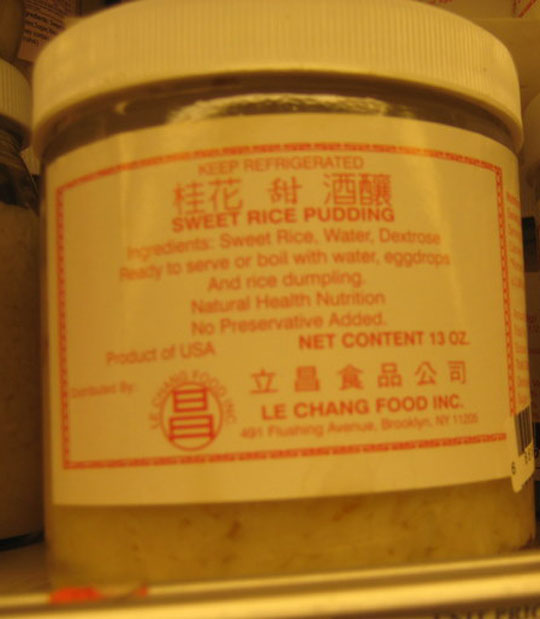
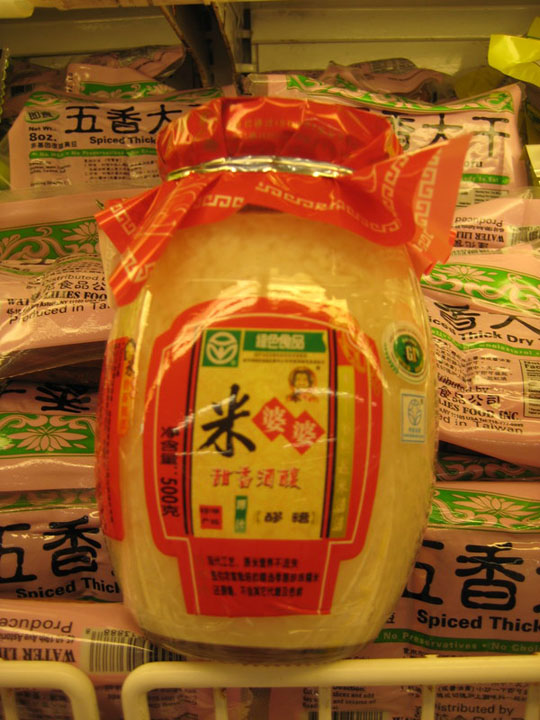 Chinese use one or another mold to start their fermentations. They call them chu while Japanese call them koji. Written records indicate that in both countries, rice, then wheat, and then millet were the preferred ingredients to be fermented. The Chinese make yellow wines in Shaoxing this way. These wines were originally offered to the gods, stored in bronze vessels, and consumed most by temple priests. Nowadays, these fermented beverages are consumed by everyone, and they can be fermented by these molds, by yeasts or bacteria. Many add medicinal herbs to the ferment.
Chinese use one or another mold to start their fermentations. They call them chu while Japanese call them koji. Written records indicate that in both countries, rice, then wheat, and then millet were the preferred ingredients to be fermented. The Chinese make yellow wines in Shaoxing this way. These wines were originally offered to the gods, stored in bronze vessels, and consumed most by temple priests. Nowadays, these fermented beverages are consumed by everyone, and they can be fermented by these molds, by yeasts or bacteria. Many add medicinal herbs to the ferment.
Early Chinese history tells us that the emperors drank six 'clears,' five 'qi's' and three 'jiu's. The six were boiled water, sweet wine, rice wine, mellow wine, and wines made using yeasts that fermented thick or thin porridge. The five 'qi's' were actually more than five different items. They were wines fermented with residues of rice, sorghum, and millet, sweet wines with floating matter, and sweet wines made from soaked grains that made turbid wines, and wines made with lots of bottom sediment. The three 'qi's' were filtered wines for sacrificial purposes and/or wines for drinking. These were called shi jiu and made for special occasions, xi jiu made and aged, and qing jiu, a wine aged longer and more clear than any of the others.
Tea was a popular beverage whose leaves they said were fermented. Discovered by the Chinese Emperor Shen Nong in 2737 BCE, the story told is that some leaves from tea trees inadvertently fell into a pot of boiling water being cooked to quench his thirst. However, written documentation does not mention tea until the third century BCE, then it was to boost alertness. Incidentally, the term 'fermented' is incorrect for this process.
Tea connoisseurship has been an indispensable part of Chinese life. Many leaves are freshly brewed and made from these wrongly called fermented leaves. The correct technical term is 'oxidized' and not 'fermented.' Teas were made this way for thousands of years.
In China, the home of green and oolong teas, people drink their tea hot, almost hot, even warm, but until very recently, in the 1980's, they never drank it iced. Tea for the Chinese, is a basic element of hospitality and civilization, it does quench thirst and provide alertness.
The hospitality of tea was popular during the Song Dynasty (960 - 1279 CE), and may have predated that, beginning before and during the Tang Dynasty (618 - 907 CE). Then, relaxing, drinking, and dining were part of social gatherings. Wine shops improved business serving alcoholic beverages warm, and in the Northern capital of Kaifung, tents were set up to serve wine to the working class.
This outside service may have been one of the earliest uses of wine for non-royals and non-religious folk to consume fermented beverages. Ordinary folk thought there was an association between wine and sex. During the Festival of the Dead, parades with prostitutes carried many things including jars of rice wine. That may have been the connection. Anyone seen anything written about this?
When the Mongols came to power and ruled (1280 – 1366 CE), there were changes in the fermented beverage business. They preferred fermented mare's milk, called koumiss over fermented rice and fruit-based wines. Actually, they drank so much that many of them died from liver disease as alcoholics. William of Rubrick, a European monk in China during this period, called it cosmos and said his royal Mongolian hosts consumed almost nothing else.
During the Ming Dynasty (1368 - 1644) not much changed other than which alcoholic beverages were consumed and how they fermented them. The government assumed some control in the production of alcoholic beverages when the Imperial Palace instituted a wine bureau to oversee preparation not only of wines but also fermented soy milk and fermented bean curd.
This wine bureau did not always record the amount produced of each type, assumptions are it was a great deal. Ming artists and many a common man lost themselves to drink. They liked to emulate historical drunks who drowned themselves in jiu.
During the Qing Dynasty (1644 - 1911), rulers went back to drinking koumiss; one would expect no less as they were Manchu people. One emperor even had a special koumiss cup made of jade. Yuan Mei (1716 - 1798), a great Chinese gourmet who many emulated, said that to drink the dark millet brew of Lishiu was irresistible, but to drink quince wine was simply vulgar.
In recent years, sipping a fragrant cup of Iron Goddess of Mercy, Pu-er, or another tea even if one knows it is really not fermented, is a sign of sophistication and consumer health. Tea drinking is fueling health interests nation-wide, even world-wide. There is a fever telling everyone to drink lots of tea to stay healthy.
For generations, Chinese have paid attention to their beverages, how ingredients for them were grown, and how they were processed and brewed. This attention, they say, shows refinement and artistic talent. Fermentation, they believe, promotes people’s good health and fermented beverages offer protection against age-related illnesses as well as keeping ones good looks. They believe that with small or large amounts of alcohol and tea, fermented beverage consumption is a Chinese road to good health.
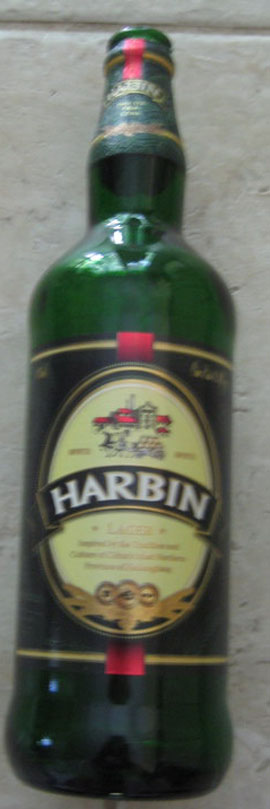 In China, alcoholic beverage consumption has tripled in the past fifteen years. Many Chinese believe wines and other fermented beverages along with ginseng, chlorella, and/or algae in them, enhance longevity, reduce stress, increase sexual performance, boost energy, and stimulate the body's immune system. In the United States and Europe, fermented milks (think yogurt), and vinegars are said do the same.
In China, alcoholic beverage consumption has tripled in the past fifteen years. Many Chinese believe wines and other fermented beverages along with ginseng, chlorella, and/or algae in them, enhance longevity, reduce stress, increase sexual performance, boost energy, and stimulate the body's immune system. In the United States and Europe, fermented milks (think yogurt), and vinegars are said do the same.
China was a producer of another fermented beverage, beer. Today, there are more than eight hundred breweries in their country, most producing low alcohol beer for local markets. One that has become very popular is illustrated on this page as purchased, and undressed. China is the second leading beer manufacturer worldwide, the United States not too far behind. One historian wrote that the history of Chinese beer is very ancient, that several thousand years ago it was called lao li, and only recently has it been called pi jiu. Originally, pi jiu meant beer or ale, and its use in recipes was minimal, as was documentation about this fermented beverage. That amazes, because fermented beverages were written about on oracle bones and on jars made to hold alcoholic liquids.
A scientist at the University of Pennsylvania's Museum of Archeology and Anthropology advises that fruit juices and beers were found in the Stone Age village of Jiahu in Northern China. The insides of these containers test positive for alcohol. It is thought they were used for ceremonial and funeral purposes, and the beer-like beverage they held was made from rice, honey, grapes, and hawthorn fruits probably fermented with barley malt; they were not made with hops.
Wonder what it tastes like? Learn by reading in the 2004 Proceedings of the National Academy of Sciences where Chateaux Jiahu from the Dogfish Head Brewery in Milton in Delaware makes what may be the evaporated equivalent from those jars. Beer is judged by color, aroma, body, and taste and brews can be evaluated for every one of these factors.
In China, beer went out of favor. Now, there is a resurgence, breweries more popular than ever, their products made for or with foreigners. One such in Northeast China is now the Harbin Brewery. A picture of their beer appears on this page. This brewery was founded by Russians in the late 1800's and originally made to supply workers on the Trans-Manchurian Railway. This beer, shown on these pages, is made in China's fourth largest brewery.
China's largest brewery is Tsingdao, founded in 1903 by Germans in the lakeside city of Qingdao, not too far from Jinan. Its beer uses mineral waters from the nearby Laoshan mountains. Taken over by the Japanese in 1915, it remained under their control until 1945 when it was taken back by the Chinese. Tsingdao uses German technology. They began fermenting their first lager beer in 1980.
China's largest beer manufacturer is the Yanjing Beer, named for what is now called Beijing but was named Yanjing during the 5th to 3rd centuries BCE. Latest figures located for this brewery still in Beijing, are from 2005 when they brewed more than three million tons of beer.
In 1985, in the Guangdong Province, the Guangzho Zhu Jiang Brewery started fermenting and producing beers using Belgian technology. Theirs is called the Pearl River brand and they say it is the world’s largest brewery. Another brewery in the region of Qiandaohu in Hangzhou is now making a popular beer called Cheerday. They plan to expand soon because Kirin, Japan's second largest beer producer, recently purchased a twenty-five percent share in their venture.
Ashi, another Japanese beer is building a beer production line in Huzhou in the Zhejiang Province. Tiger beer, an Anheuser Busch joint venture, adds Americans to those helping Chinese manufacture beer. Chinese beer uses barley malt its ‘soul’ and more and more beers from China are consumed and more are exported each year.
The Chinese do not chill their beer mugs nor their glasses. They believe beer is more complex than ever and the colder it is, the fewer the flavors discerned. It is interesting to note that Chinese drink beer for recreation and have it with food, and they believe beer builds strong bones and increases health and happiness. They make their beers filtered, clarified, and aged.
Some years back, when visiting the Tsingdao brewery I was able to taste this beer fresh from the vat, and before bottling. There, I learned to love beer as never before. I even brought a six-pack back to the United states. That was when carrying liquids onboard aircraft was permissible. Once home, beer drinkers in my family all agreed it was fresher, better, and different from any beer purchased in the USA.
Cooking with beer or any fermented beverage including mao tai, no matter its alcoholic content, and cooking with tea does enhance the taste of braised, stewed, and steamed dishes, especially those made with meat. We do so often and are aware that no matter the color or kind, the alcohol does evaporate when cooked.
In China, beer or wine can be called 'venerable jiu' which means 'old wine.' Though it may not be old in years, it can have sugar or additional water added. That said, taste Chinese or any country’s beer or wine with or without foods, and then cook with those you like best.
China strives for traditional wines and traditional dishes. With increased economics, more people can now afford to drink them. Purchasing alcoholic beverages in the ‘Middle Kingdom’ means more Chinese are making cooked foods with them and enjoying them more than ever before. Some Chinese recipes follow enabling you to do likewise.
| Dunken Chicken IV |
|---|
1 chicken,(4 to 5 pounds), cut in half 2 teaspoons coarse salt 2 to 3 cups Shaoxing wine 1 can chicken broth 1 Tablespoon oyster sauce 2 Tablespoons thin soy sauce 2 Tablespoons cornstarch Preparation: 1. Remove any breast bone and any dark material in/that was near it, then rinse chicken with cool water, and dry it well with paper towels. 2. Rub salt over all sides of the meat and bone, and refrigerate for two to three hours. 3. Put the chicken in two flat pans with one to two in ch sides and cover each with two cups of water; then one each, in the basket of a large steamer and steam over boiling water for twenty minutes, reversing them after the ten minutes. 4. Remove steamer layers and cover each one with an upside down dinner plate allowing them to rest for three-quarters of an hour before pouring off any liquid in each of them into a large bowl. 5. Put wine, chicken broth, oyster sauce, and soy sauce in a large bowl. Strain the reserved liquid from the pans the chicken halves were steamed in into that bowl, and stir well. 6. Cut each chicken half into two pieces after removing the leg pieces. Put all of these pieces into the bowl and refrigerate for twelve to eighteen hours, turning the pieces every three hours. 7. Mix the cornstarch with one cup of the marinade, bring to the boil, stir until somewhat thickened and clear, then put one ice cube into this mixture. Remove the chicken pieces from the bowl, cut the breast and thigh pieces into two-inch pieces and place them on a platter making them resemble two halves of the chicken. Pour the warm thickened sauce over them, and serve. |
| Abalone in Wine Sauce II |
|---|
1/2 head iceberg lettuce, shredded into one-quarter-inch strips 1/2 teaspoon coarse salt 1 Tablespoon sesame oil 2 Tablespoons vegetable oil 1 can abalone, drained and thin sliced 2 Tablespoons Chinese rice wine 1 Tablespoon oyster sauce 2 teaspoons thin soy sauce 1 Tablespoon cornstarch mixed with the same amount of cold water Preparation: 1. Bring chicken broth to the boil, add the shredded lettuce, sesame oil, and salt and stir just until all the lettuce has been wet, then pour this into a strainer and allow to drain for ten minutes before spreading the lettuce on a large platter. 2. Heat oil, add the sliced abalone, rice wine, oyster sauce and the thin soy sauce and in half a minute, add the cornstarch and water mixture and bring to the boil. Stir well, then remove the abalone and place the slices nicely on the lettuce, pour the thicken sauce over them, and serve. |
| Sichuan Pickled Vegetables II |
|---|
2 Tablespoons coarse salt 3 Tablespoons Sichuan peppercorns 2 red chili peppers, cut in quarters the long way, seeded, their membranes removed 1 small knob of fresh ginger, peeled, and cut into long very thin strips 2 Tablespoons Mao tai or any Chinese liquor 3 Tablespoons Chinese rice wine 6 carrots, peeled, then cut into two-inch by half-inch strips 3 Chinese thin cucumbers (do not peel them), cut into two-inch by half-inch strips 1 small Chinese white turnip, peeled, then cut into two-inch by half-inch strips 1/2 small head of cabbage, core removed, then cut into two-inch by half-inch strips Preparation: 1. Rinse a crock or very large jar, and dry it with paper towels, then add two quarts of boiling water, the salt, Sichuan peppercorns, chili peppers, and the ginger and allow to cool overnight. 2. Put all the vegetables (as many as fit at one time) into a large strainer basket and pour one quart of boiling water for each strainer basket full, over the cut vegetables, drain well, and then put these into the crock or jar, continuing until all have been rinsed with and then drained from their boiling water. 3. Cover loosely, stir the vegetables every six hours with a large spoon that has been rinsed with boiling water, and the vegetables are ready to eat after eighteen hours. Serve the vegetables drained, and at room temperature. |

Copyright © 1994-2025 by ISACC, all rights reserved
Address
3 Jefferson Ferry Drive
S. Setauket NY 11720